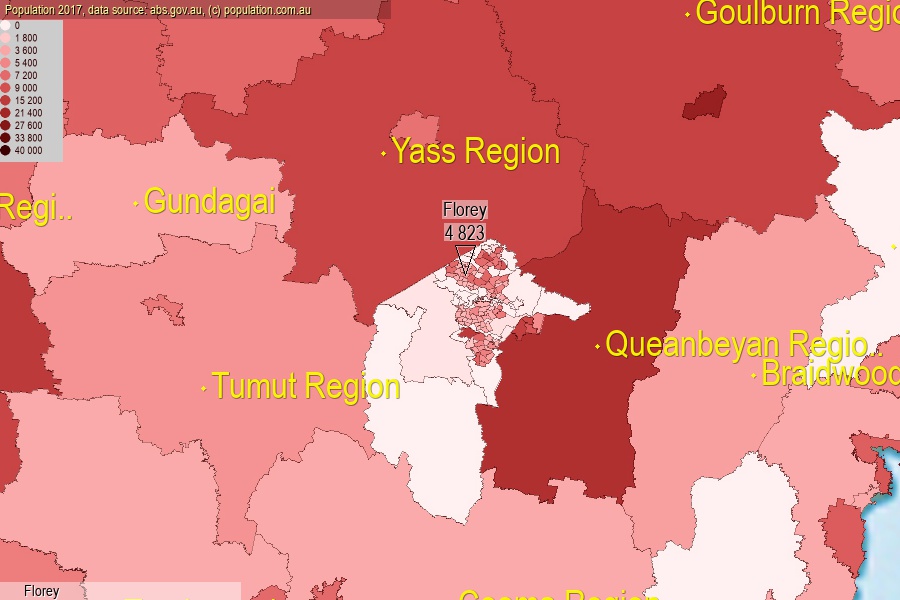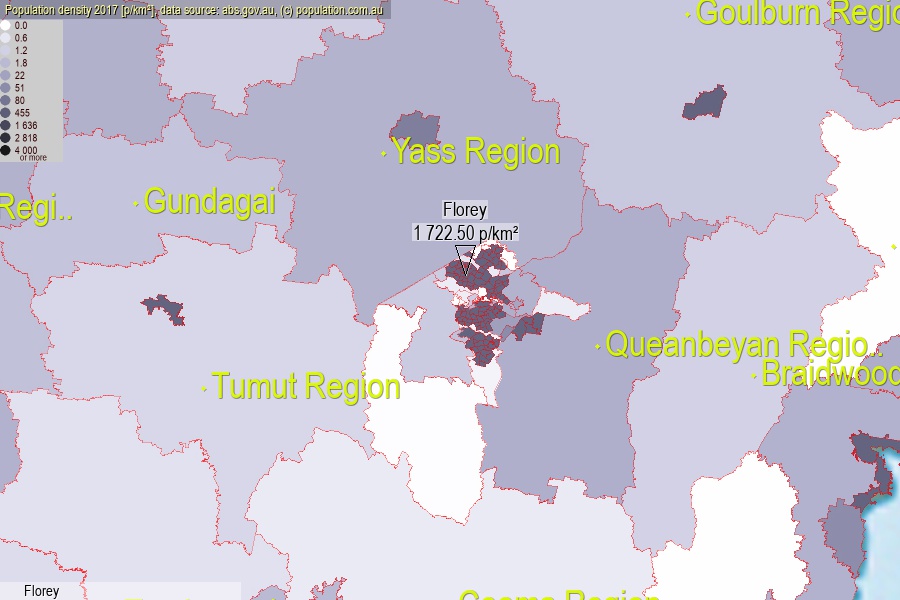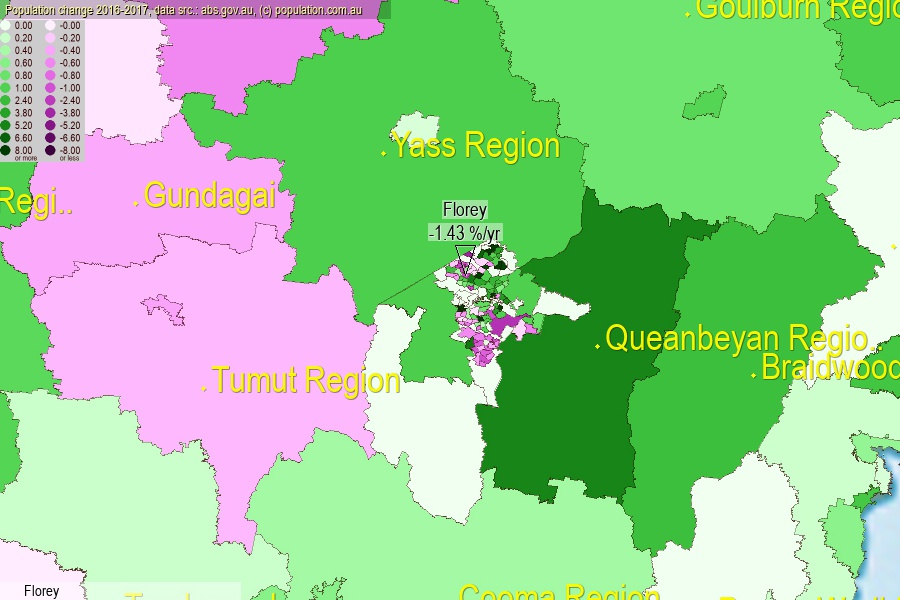 population.com.au
population.com.auLast official estimated population of Florey (as Statistical Area Level 2) was 4 823 people (on 2017-06-30)[2]. This was 0.02% of total Australian population and 1.151% of ACT population. Area of Florey is 2.80 km², in this year population density was 1 722.50 p/km² . If population growth rate would be same as in period 2016-2017 (-1.43%/yr), Florey population in 2025 would be 4 298. [0]



Click to enlarge. Florey is located in the center of the images.
Population [people], population density [p./km²] and population change [%/year] [2]
View borders » (new window) [4]
[1991-1992] -1.08 %/Yr.
[1992-1993] -1.04 %/Yr.
[1993-1994] +0.45 %/Yr.
[1994-1995] +2.93 %/Yr.
[1995-1996] +0.58 %/Yr.
[1996-1997] -1.60 %/Yr.
[1997-1998] -1.02 %/Yr.
[1998-1999] -0.70 %/Yr.
[1999-2000] -0.38 %/Yr.
[2000-2001] +0.05 %/Yr.
[2001-2002] -0.65 %/Yr.
[2002-2003] -0.63 %/Yr.
[2003-2004] -0.77 %/Yr.
[2004-2005] -1.27 %/Yr.
[2005-2006] -1.08 %/Yr.
[2006-2007] +0.38 %/Yr.
[2007-2008] +0.36 %/Yr.
[2008-2009] 0.00 %/Yr.
[2009-2010] -0.65 %/Yr.
[2010-2011] -1.41 %/Yr.
[2011-2012] -0.84 %/Yr.
[2012-2013] -0.96 %/Yr.
[2013-2014] -1.59 %/Yr.
[2014-2015] -1.86 %/Yr.
[2015-2016] -1.57 %/Yr.
[2016-2017] -1.43 %/Yr.
[0] Calculated with linear interpolation from officially estimated population
[1] Read more about SA2 and Australian Statistical Geography Standard (ASGS) on abs.gov.au
[2] Population data from Australian Bureau of Statistics (Population and density: 2017; change: 2016-2017)
[3] Digital Boundaries: Australian Statistical Geography Standard (ASGS) 2016.
[4] Border coordinates are simplifyed using Ramer-Douglas-Peucker algorithm.